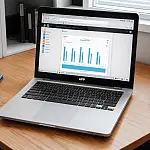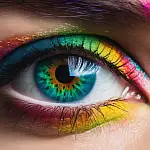What is Skeuomorphism and Skeuomorphic Design?Skeuomorphic Design is a design pattern where things look like it's made of something else, such as ebook readers looking like a bookshelf.
Skeuomorphism is a design pattern that makes things look as if it is made of something else. This week, Apple announced that their new iOS7 operating system is going to scrap the traditional look of its icons which mimic real-world objects, such as the envelope for a message.
Steve Jobs believed computers should be so simple to use that a complete novice could master them based on instinct alone. The envelope is the standard symbol for email or SMS messages. It offers a nice distinction between read and unread as messages can be shown as opened and unopened envelopes. The standard Cut, Copy and Paste icons are scissors, a clipboard and a pot of glue to represent real-world actions.
Some applications take this a step further by actually recreating a series of design elements made to look like real-world objects - a good example is the Apple Ebook Reader which mimics an entire bookshelf complete with books that look like real-world books. Other applications function in the same way as their old-world equivalents, such as contacts lists using an A-Z index down the side to navigate in much the same way as a Filofax or organiser.
The skeuomorphic design originally gave novice users an intuitive understanding of how an application works - they know what a real-world button looks like so they see one on a screen and "know" to click the digital version. It gives them a sense of familiarity, but is this required now that technology is so mainstream?
Apple doesn't think so. At its Worldwide Developers Conference presentation of its new iOS7 user interface on Tuesday, Apple's Jony Ive announced a radical revision to their design approach that will be ditching real-world visual metaphors in favour of a minimalist "flat" approach.
"iOS 7 is the most significant iOS update since the original iPhone,"
The move away from skeuomorphism has been in discussion ever since iOS executive Scott Forstall left Apple last year. Scott, along with Steve Jobs, was a fond advocate of skeuomorphic design and with his departure, few people are fighting to keep the skeuomorphic design.
With Microsoft's new Metro interface on Windows 8, and now iOS7 adopting a flat design interface, it looks increasingly like skeuomorphic design is going the way of the Dodo. More and more websites are adopting the flat look styled after Metro, and now I'm sure more websites will start emulating the iOS7 interface as well.
Is flat design the next future or do you think it's just a fad that will pass in a year? Has skeuomorphic design served its purpose in allowing a transition to a digital world? What do you think are the wider implications of this design change? What does this mean for application developers?











